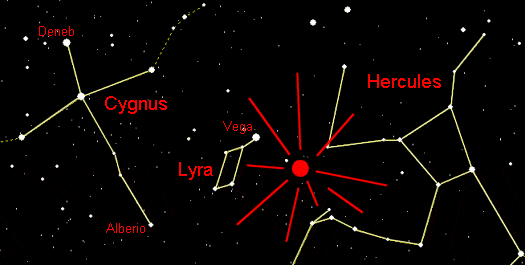It is difficult to predict in advance what the strength of the Lyrid shower will be, but the fact that the moon is not in the sky during the evening hours, and even so it is only at its beginning, can help to observe more meteors

By Fraser Kane, Universe Today website
There are some safe meteor showers such as the Leonids, Perseids and Geminids. Other meters are less predictable and may disappoint, when only a few dozen meteors fall on us every hour, or accelerate to hundreds per hour - a complete meteor storm. The lyrid meter is an example of such a meter. Especially when the peak will be when the moon is new - on the night between April 21 and 22, 2012. It will be impossible to know how it will end, until we observe it.
The source of the meteors is in Comet Thatcher (C/1861 G1), the debris trail observed behind it as it makes its 415-year elliptical orbit around the Sun. Every year the Earth passes through the path, encounters the tiny particles made of ice and dust and evaporates them in the atmosphere. Thatcher's loss is our gain.
The meteors are named after the Lyra group, because they appear to appear from an area near the familiar group, not far from the bright star Vega, which is part of the group. You should not look at one point, meteors can be seen anywhere in the sky.
Every year the fairs start to build up around April 16th and peak on April 21-22 and then disappear by April 26th. At their peak, the meteors can reach a rate of 10-20 meteors per hour, but peaks of activity with more than 100 meteors per hour can be seen as the Earth passes through clumps in the dust trail. It is difficult to know in advance if this is going to be a good year for any meteor shower, but this year the Lyrid shower also collides with a new moon (Rosh Chodesh Hebrew, AB) which falls on April 21st. Without the glow of the bright moon, meteors are easier to observe.
It will be possible to see them from any point on the planet, just go out from the city lights on the evening of April 21 and watch the dark sky. How will you know that you are far enough from the city - if you see the Milky Way, it means that you are in a dark place. It is advisable to go out with friends and don't forget to wear warm clothes. Especially in the desert.

One response
While the meteor is falling it is recommended to make a wish that the meteor will not hurt you or you.